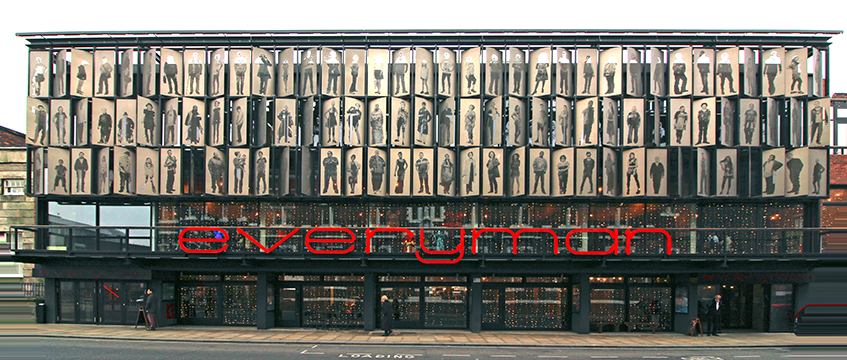In the mid-1980s, Gary Clark won a student design award for a project mapping out plans for a low-energy house. His success sparked a career-long interest in energy efficiency in the built environment. Some three decades later, the architect’s passion for the topic has a greater urgency than ever.
“We are entering a new decade – probably the most critical decade of our civilisation,” Clark told the audience at a “Thinking Out Loud” presentation on climate change at the London studio of HOK, the architecture firm at which he is a principal. “We’ve got 10 years to avert what is going to be a crisis.”
Ambitious targets to deliver net-zero-carbon buildings by 2050, and nearer-term goals for property companies to overhaul the way their portfolios operate in the coming 10 years, mean the hard work “starts now, starts today”, said Clark, who is also chair of the sustainable futures group at the Royal Institute of British Architects.
“This year is the point of no return,” he added. “This is it.”
Taking responsibility
Clark’s arguments now come at the broad real estate industry from all angles, but the startling numbers have lost none of their impact.
According to the United Nations’ Intergovernmental Panel on Climate Change, a 7.6% reduction in carbon emissions each year until 2030 must take place with immediate effect to address the climate crisis. The UK construction industry contributes about 40% of the UK’s carbon emissions. “That’s why it is so important that we take responsibility for this,” Clark said.
RIBA’s 2030 Challenge, which the institute launched late last year, tasks chartered practices that sign up with reducing operational energy demand in buildings by at least 75% and embodied carbon by 50%-70%, before offsetting; reducing potable water use by at least 40%; and achieving a range of health and wellbeing targets in properties.
That should put the industry on a course to achieve net-zero whole-life carbon by 2030 for not just new buildings, but also existing buildings that will need to be retrofitted. The latter category is “the elephant in the room, and we must address it this year”, Clark said.
“If we do nothing, it’s a straight line to [an increase in global temperatures of] four degrees – that is unliveable,” Clark said, adding: “We need the trajectory to go faster for new and deep retrofit buildings. We need to hit that 2030 [target], it’s absolutely critical that we attempt to do this. And we can’t build any new unsustainable buildings going forward, because that 30 years [between now and 2050] is probably when we’ve got to deal with existing building stock.”
Follow these leads
Clark highlighted several buildings that he hopes can inspire property players to push harder and achieve more when it comes to efficient buildings.
They included the Haworth Tomkins-designed Everyman Theatre in Liverpool, which won the RIBA-Stirling Prize in 2014.
“This is probably the best-performing, best-looking theatre in the world,” Clark said. “This achieves a 70% reduction in energy with no renewables, this is just with natural ventilation. The oldest principles that I learned as a kid – this is where it all comes together.”

Clark also pointed to Goldsmith Street in Norwich, which won the Stirling Prize last year. It comprises almost 100 homes in which energy costs are estimated to be 70% cheaper than for an average household, with even small details playing a part – the Mikhail Riches Architects-designed homes’ letterboxes are built into external porches, for example, to limit the possibility of draughts.
“That [scheme] hits our 2030 challenge,” Clark says. “This was done for £1,800 per square metre, so this whole [argument] about ‘it costs more, we can’t afford it’? There’s no excuses.”
In Lark Rise in Buckinghamshire, Clark sung the praises of the “Passive House Plus”, which architects at Bere have promoted as “perhaps the most advanced house in the UK”. It produces twice as much energy as it uses and, as Bere puts it, “can be regarded as a mini power station for the National Grid”.
Make the call
Clark sees no reason why all designers and developers should not be thinking along these lines in their projects.
“There are absolutely critical things we need to change in behaviour and attitudes now,” Clark told his audience, adding that the time for different parties in the built environment blaming each other for a lack of progress has passed.
“If you’re a consultant, phone clients of your existing buildings,” he said. “Help them to tune up their buildings. You can achieve a 20% energy and carbon saving by helping the client to tune up the building – that’s 20% you can do now. But we have to do it in a no-blame culture. We’ve got to work together.”
Clark offered a checklist for design firms, including prioritising deep retrofits, reducing water usage in schemes by 40%, and aiming for WELL Building Standard or equivalent for all schemes – and he urged the industry to recognise projects that tick the right boxes: “What we can do is applaud exemplars, and show what good looks like.”
To send feedback, e-mail tim.burke@egi.co.uk or tweet @_tim_burke or @estatesgazette











